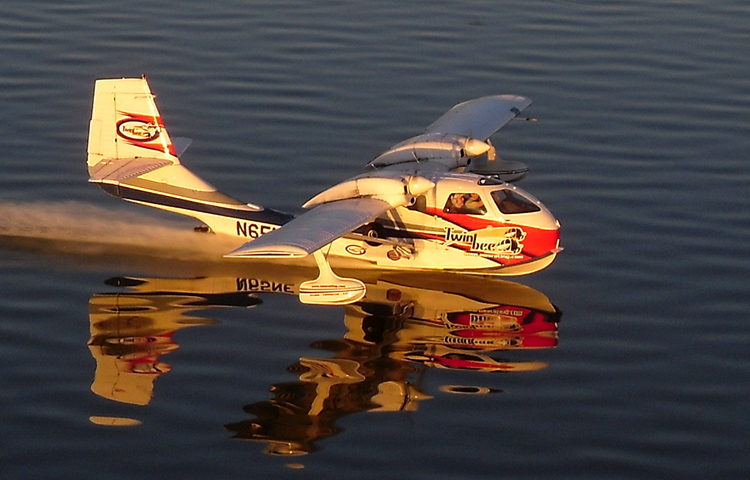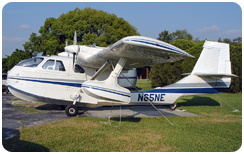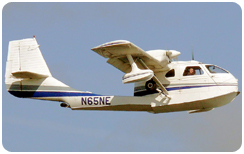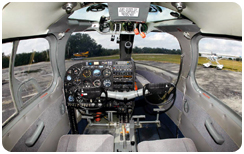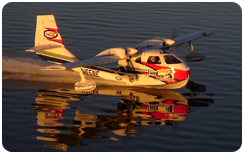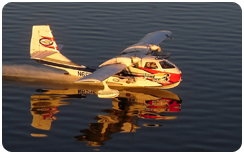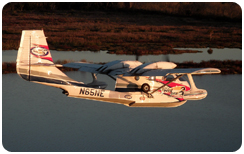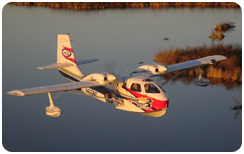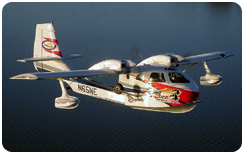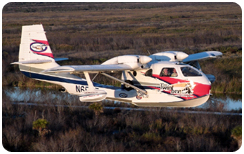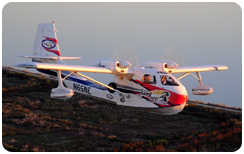N65NE
|
||||||||||||||||||||||||||||||||||||||||||||||||||||||||||||||||||||||||||||||||||
|
AIRCRAFT DATA |
||
| Manufacturer: | STOL Aircraft Corporation; Norwood Airport, Norwood, MA 02062, USA | |
| Model: | UC-1 Twin Bee | |
| Type Certificate No: | A6EA (25 June 1965) | |
| UC-1 Serial Number: | 023 | |
| RC-3 Serial Number: | ? | |
| Manufacturing Date: | 1986-05-21 | |
| Engines: | 2
x Lycoming
IO-360-B1D 180 HP @ 2700 RPM |
|
| Remarks: | Mode S codes: 52105622 / A88B92 | |
| Reg. No. | Date | Remarks |
| N45003 | 1986-05-21 | Manufacturing Date. |
| 1986-05-21 | First flight by test pilot Peter Annis. | |
| 1986-??-?? | Cancelled from US CAR. | |
| N71021 | 1986-06-09 | Certificate of Airworthiness issued. |
| 1986-08-05 | C
of R issued to: Sea-Air Equipment Assoc. Ltd. Partner; Nashua, NH. Later address changed to Nantucket, MA. |
|
| 1989-??-?? | Cancelled from FAA Aircraft Registry. | |
| N65NE | 1989-09-15 | Re-registered. |
| 1992-09-24 | 'Registration Pending', New York. | |
| 1995-11-20 | C
of R issued to: James E. Schuster; 506 E Pioneer Road, Fond Du Lac, WI 54935-6474. |
|
| 1999-05-11 | C
of R issued to: Jay L. Merten; Dallas, TX, USA. |
|
| 2002-03-12 | C
of R issued to: Hardy F. Lebel; 140 High Street Apt. 201, Westerly, RI 02891-1800. |
|
| 2004-??-?? | Owner
of the N65NE Bee: Ricci Rowe.
Ricci Rowe grew up in Central Florida, attended the University of Florida and currently flies for Southwest Airlines where he is a Senior Captian and Check-airman. Ricci's involvement in aviation started with his first airplane ride at 6mos of age in a Cessna 195 (N1TB) that was purchased new by family friend Tommy Bartlett. Ricci now owns this plane and still flies it regularly. As a young man Ricci skied in the famous Tommy Bartlett Water Ski Show in Wisconsin. Learning to fly at an young age in the Canadian bush he developed a love for the adventures of seaplane flying. Flying a single engine Seabee to places like I-Falls, Kenora, Churchill, York Factory and Camp Manateau. Starting in 2004 with the purchase of the Twin Bee, Ricci started a venture to share his love of seaplane flying with others. Successfully operating at Jack Brown's Seaplane Base since 2004 it has become too busy for the facilities at Brown's and is now moving to Lake Wales, FL (X07) where devoted classroom and ramp space is available. Our relationship remains great with Jack Brown's and check-rides will still be administered by the Brown Brothers. |
|
| 2005-02-01 | C
of R issued to: E S P Aviation LLC; 3511 Silverside Road STE 105, Wilmington, DE 19810-4902. Operated by: Eric Weaver |
|
| 2008-01-15 | New
address: ESP Aviation | MESRating.com Eric Weaver 150 East Ruby Street Tavares, Florida 32778 USA Tel: 352-508-1800 |
|
| 2014 | For sale. | |
| 2019-02-23 | Sadly, The Twin Bee Website have received several messages informing that Twin Bee #023, N65NE, crashed in Florida, USA, on Saturday, February 23, 2019. Awaiting first official NTSB Accident Synopsis, news media report that the Twin Bee took off from Winter Haven's Gilbert Airport (KGIF), Polk County, Florida, for a training flight. At 12:45 PM, shortly after take off the aircraft apparently lost engine power and crashed into the roof of a house on 2735 Idylridge Drive, just south of airport. Photos suggest that the aircraft made an almost vertical impact into the house. Flight instructor James Wagner (64) was killed. Student pilot Timothy Sheehy (33), from Montana, survived with minor injuries. A young resident of the house, Carmelle Ngalamulume (17), also suffered minor injuries. More information will be published when NTSB Preliminary Report is available. NTSB Identification: ERA19FA106 On February 23, 2019, about 1243 eastern standard time, a
STOL Aircraft Corp UC-1 amphibious airplane, N65NE, impacted a
residence shortly after takeoff from Winter Haven Regional
Airport (GIF), Winter Haven, Florida. The flight instructor
was fatally injured, the commercial pilot receiving
instruction sustained minor injuries, and there was one
serious ground injury. The airplane was owned by ESP Aviation
LLC and privately operated under the provisions of 14 Code of
Federal Regulations Part 91. Visual meteorological conditions
prevailed, and no flight plan was filed for the local
instructional flight which departed at 1239.
|
|
| Sources: | Peter
Annis. FAA Aircraft Registry. Eric Weaver. |
|
|
|
||
|
Prev | Production | Next |
||
| Updated 2019-03-23 | © 2004-2019 Steinar Saevdal | |
